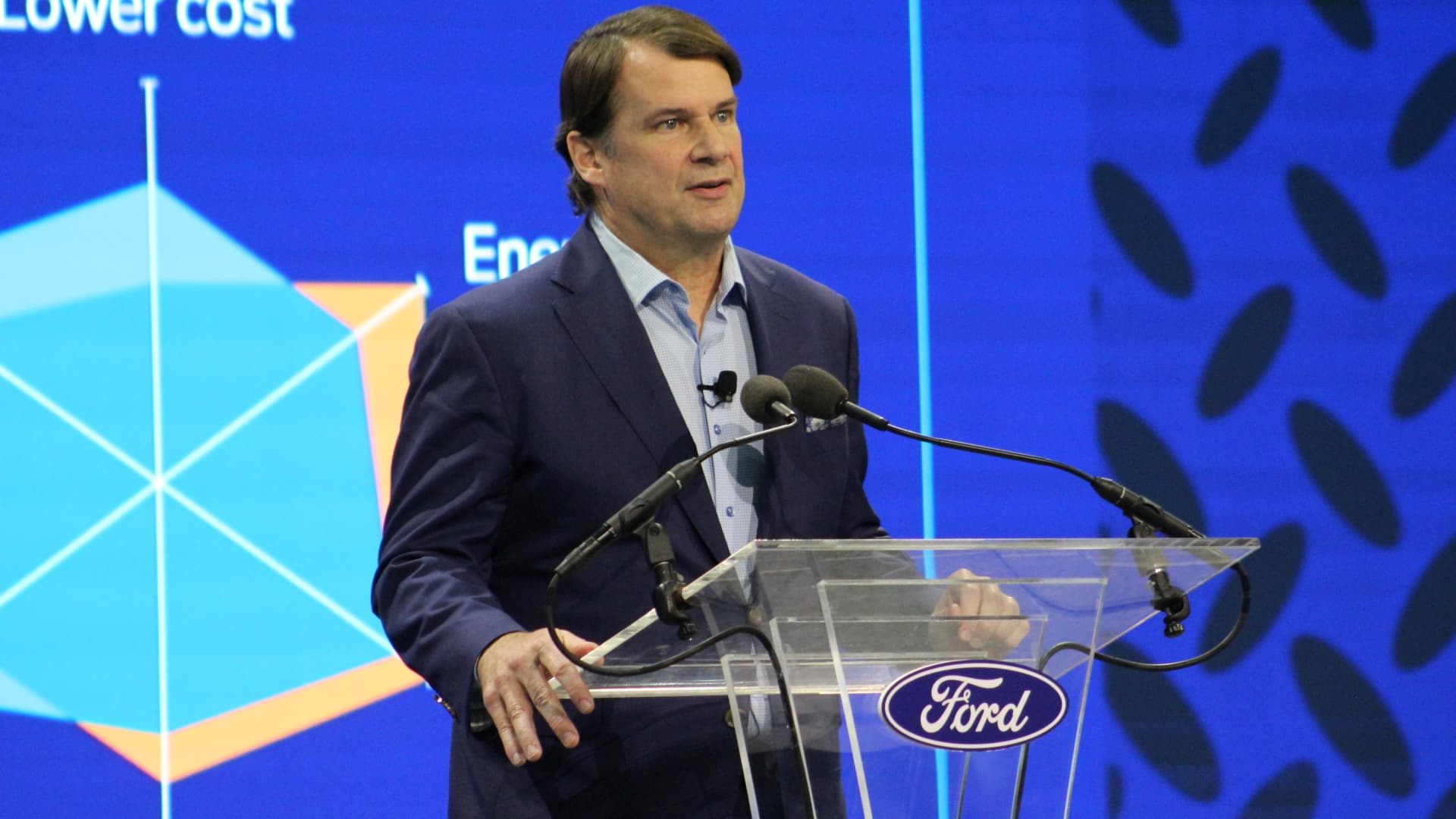Products You May Like
DETROIT – Ford Motor said Monday it will collaborate with a Chinese supplier on a new $3.5 billion battery plant for electric vehicles in Michigan, despite tensions between the U.S. and China.
The anticipated announcement of the deal between Ford and Contemporary Amperex Technology Co., or CATL, follows Virginia Gov. Glenn Youngkin saying he was withdrawing the state from a competitive process to attract the planned Ford plant over its connection to the Chinese company.
Lisa Drake, Ford’s vice president of EV industrialization, said the automaker will own the new facility through a wholly owned subsidiary instead of operating it as a joint venture with CATL, which several automakers, including Ford, have done with non-China partners in the U.S. She said the company will license the technology from CATL, including technical expertise.
“The LFP technology is already here in the U.S. It’s in a lot of consumer electronics devices, it’s actually in another OEM product, but, unfortunately, it’s always imported,” Drake said during a media call. “This project is aimed at de-risking that by actually building out the capacity and the capability to scale this technology in the United States, where Ford has control.”
Ford Chair Bill Ford said CATL will assist in getting the automaker “up to speed so that we can build these batteries ourselves.”
“Manufacturing these new batteries in America will help us build more EVs faster and will ultimately make them more affordable for our customers,” he said Monday during an event announcing the investment.
Ford declined to comment on the financial details of the licensing agreement with CATL.
The plant is expected to open in 2026 and employ about 2,500 people, according to the Detroit automaker. It will produce new lithium iron phosphate batteries, or LFP, as opposed to pricier nickel cobalt manganese batteries, which the company is currently using. The new batteries are expected to offer different benefits at a lower cost, assisting Ford in increasing EV production and profit margins.
Ford follows EV leader Tesla using LFP batteries in a portion of its vehicles in part to reduce the amount of cobalt needed to procure to make battery cells and high-voltage battery packs.
Ford CEO Jim Farley said Monday the batteries will be among the least expensive to produce, citing better pricing for customers and wider profits for the automaker.
Drake said Ford is not necessarily concerned about the Chinese government interfering with the deal, saying the companies “certainly thought through that and those are provisions,” including optionality in the contract.
Ford’s ownership, rather than a joint venture, may assist it in avoiding additional political criticism and potentially qualify for federal EV tax credits.
Marin Gjaja, chief customer officer of Ford’s EV unit, said once production at the Michigan plant begins, the vehicles are expected to qualify for half of the up to $7,500 federal tax incentives for consumers purchasing an EV. They’re expected to meet local production requirements but not material sourcing rules for the batteries, he said.
In August, President Joe Biden signed the $430 billion Inflation Reduction Act, which included stricter consumer tax credits of up to $7,500 for the purchase of an EV as well as substantial incentives for companies to produce batteries domestically to wean the U.S. auto industry off its dependency on China for batteries.
Farley said the company has “absolutely” been talking to the Biden administration about the plant, citing the IRA incentives to assist with the American manufacturing of battery cells. He said the “economics in the IRA really made a difference.”
Ford said it expects the production of the battery cells to qualify for federal incentives of $35 per kilowatt hour produced and $10 per module. The plant is expected to be capable of producing 35 gigawatt hours (GWh) of LFP battery capacity
Before the IRA, Ford said it would team with CATL to explore increasing battery packs for the electric Mustang Mach-E crossover this year in North America. It was part of a plan for Ford to establish 40 GWh of battery capacity, capable of powering 400,000 Ford EVs, Drake said.
The new LFP plant is in addition to Ford’s collaborations with LG Energy Solution and South Korea-based SK, including a joint venture for twin lithium-ion battery plants in Tennessee and Kentucky. Those plants are expected to come online in 2025 and 2026.
Ford plans to deliver an annual run rate of 600,000 electric vehicles globally by the end of this year and 2 million globally by the end of 2026. The company aims to achieve an 8% adjusted profit margin on its EV business by then.
The automaker said it expects to begin offering the LFP batteries in the Mustang Mach-E later this year, followed by the F-150 Lightning pickup next year. It will source those batteries from CATL, the company said.
With this $3.5 billion investment, Ford says it and its battery partners have announced $17.6 billion in investments in electric vehicle and battery production in the United States since 2019. Ford, citing a “2020 independent study,” said those investments over the next three years are expected to create more than 18,000 direct jobs in Michigan, Kentucky, Tennessee, Ohio and Missouri, and more than 100,000 indirect jobs.
Michigan Gov. Gretchen Whitmer called the investment a “big win” for the state, which has moved to attract more battery production after missing out on previous multibillion-dollar investments.
“We’re working together to make Michigan the next Silicon Valley,” she said Monday at the event.
– CNBC’s Lora Kolodny contributed to this report.
